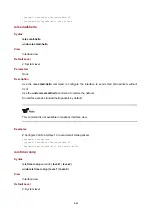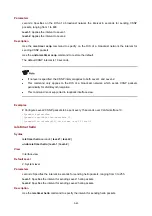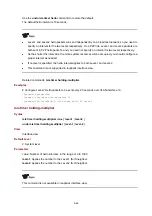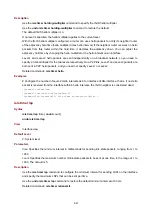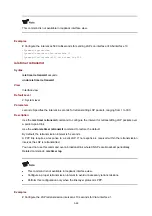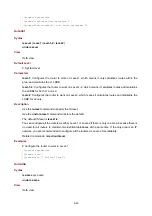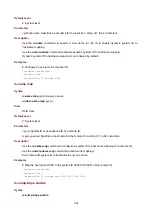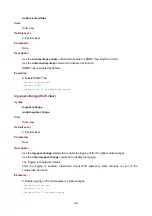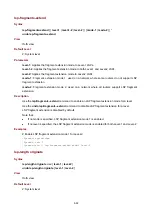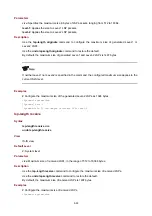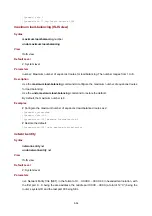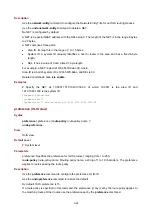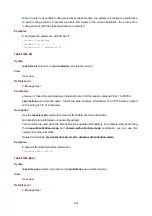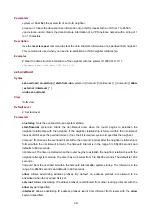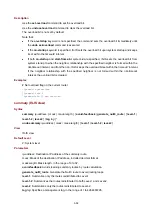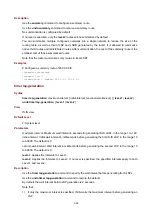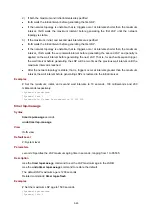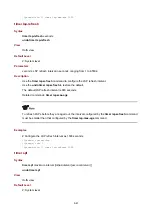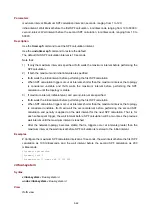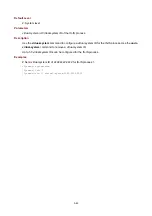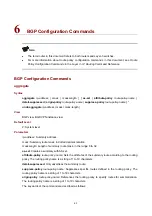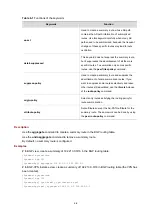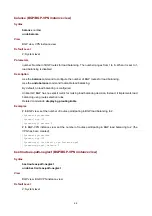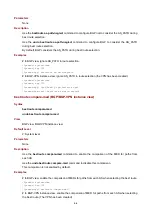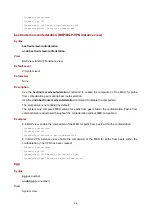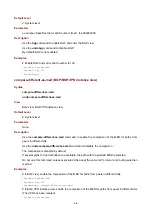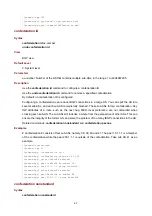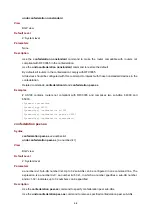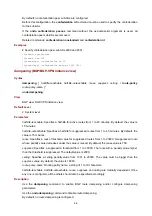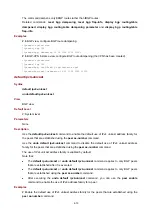
5-58
Description
Use the
set-overload
command to set the overload bit.
Use the
undo set-overload
command to clear the overload bit.
The overload bit is not set by default.
Note that:
z
If the
on-startup
keyword is not specified, the command sets the overload bit immediately until
the
undo
set-overload
command is executed.
z
If the
on-startup
keyword is specified, IS-IS sets the overload bit upon system startup and keeps
it set within the
timeout2
interval.
z
If both
on-startup
and
start-from-nbr
system-id
are specified, IS-IS sets the overload bit from
system startup to when the neighbor relationship with the specified neighbor is formed within the
nbr-timeout
interval, and from then on, IS-IS keeps the overload bit set within the
timeout1
interval.
If the neighbor relationship with the specified neighbor is not formed within the
nbr-timeout
interval, the overload bit is cleared.
Examples
# Set overload flag on the current router.
<Sysname> system-view
[Sysname] isis 1
[Sysname-isis-1] set-overload
summary (IS-IS view)
Syntax
summary ip-address
{
mask
|
mask-length
} [
avoid-feedback
|
generate_null0_route
| [
level-1
|
level-1-2
|
level-2
] |
tag tag
] *
undo summary ip-address
{
mask
|
mask-length
}
[
level-1
|
level-1-2
|
level-2
]
View
IS-IS view
Default Level
2: System level
Parameters
ip-address
: Destination IP address of the summary route.
mask
: Mask of the destination IP address, in dotted decimal format.
mask-length
: Mask length, in the range of 0 to 32.
avoid-feedback
: Avoids learning summary routes by route calculation.
generate_null0_route
: Generate the Null 0 route to avoid routing loops.
level-1
: Summarize only the routes redistributed to Level-1.
level-1-2
: Summarizes the routes redistributed to both Level-1 and Level-2.
level-2
: Summarizes only the routes redistributed to Level-2.
tag tag
: Specifies a management tag, in the range of 1 to 4294967295.

